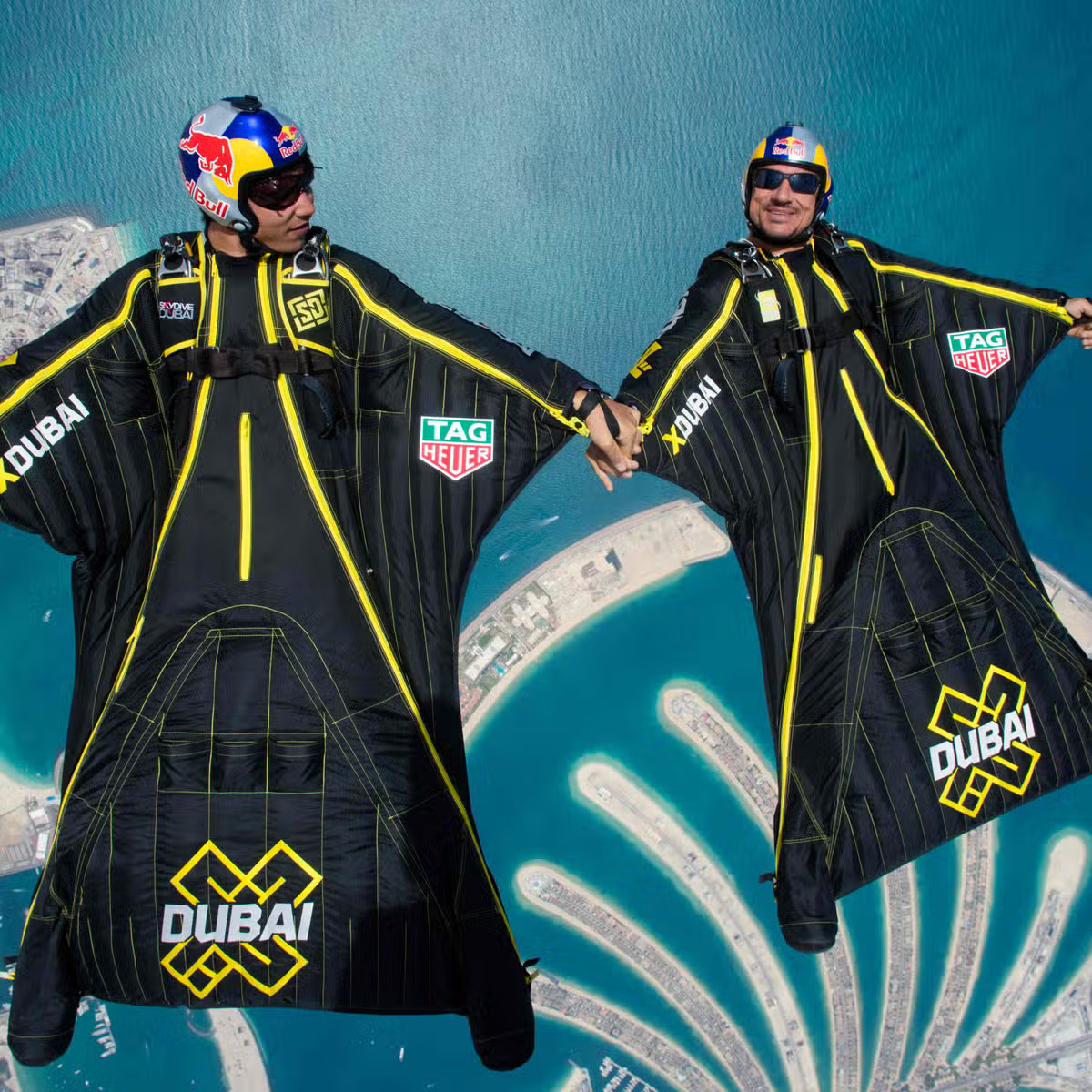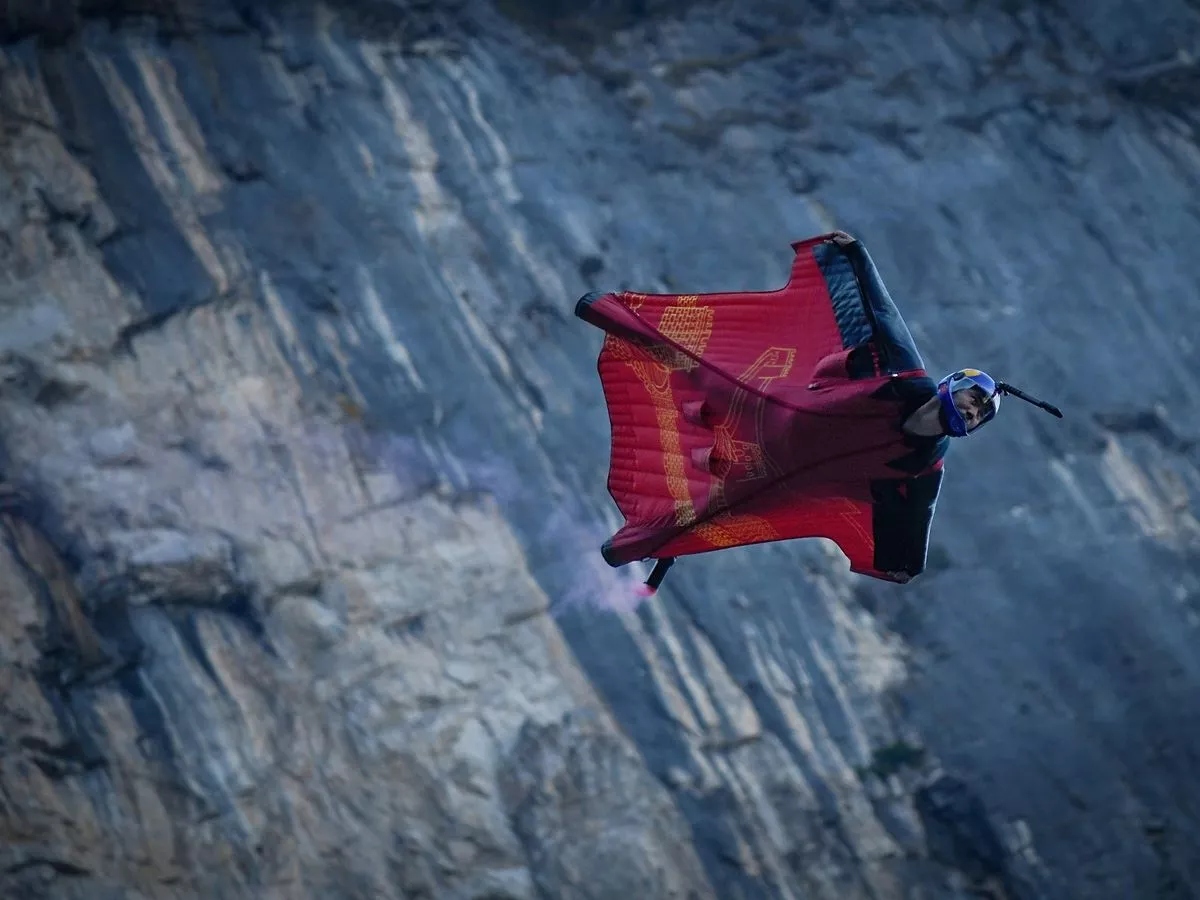Pilot Faces Manslaughter Charges After Wingsuit Daredevil Was Decapitated In Mid-air Collision
Explore the tragic incident where a pilot faces manslaughter charges after wingsuit daredevil was decapitated in mid-air collision. Learn about the risks of wingsuit flying and the legal implications in this in-depth account.
Author:Black Crystal Reviewer:Maxwell CanvasSep 26, 202335.9K Shares506.1K Views

In the world of extreme sports, daredevils continuously push the boundaries of human capabilities, seeking thrills and adrenaline rushes that are beyond imagination. However, sometimes, these pursuits can lead to unimaginable tragedies, as was the case in a recent incident that sent shockwaves through the extreme sports community.
A pilot faces manslaughter charges after wingsuit daredevil was decapitated in mid-air collision. This incident not only resulted in the loss of a precious life but also raised questions about safety measures and accountability in extreme sports.
A group of ten parachutists, including 40-year-old Nicolas Galy, participated in the act in July 2018. Disaster struck just seconds into the daredevil's jump over Bouloc-en-Quercy, France, when the plane, being flown by Alain C, came down from a height of 10,000 feet, struck the man fatally with one of the wings, severing his head off in the process.
The Daredevil Skydiver - A Passion For The Extraordinary
The skydiver at the center of this tragic incident was a seasoned daredevil known for pushing the boundaries of what was thought possible in the world of extreme sports. His passion for skydiving led him to explore the exhilarating realm of wingsuit flying, a discipline that involves gliding through the air with the use of a specialized jumpsuit designed to create lift and maneuverability.
On that fateful day, he embarked on a jump that would take him to the edge of human capabilities. Little did he know that it would also lead to a catastrophic collision that would cost him his life.
Daredevil Skydiver Decapitated Incident Details
After a reckless skydiver lost his head when he leapt out of a plane, the pilot is now being charged. In July 2018, a midair collision in France instantaneously killed parachutist Nicolas Galy.
Just 20 seconds prior to the disaster, the 40-year-old leaped off the aircraft at 14,000 feet. He was an experienced skydiver who had jumped from the plane with another skydiver while wearing a wingsuit, which is a jumpsuit with webbed sleeves that resemble wings.
However, the moment the plane dropped after the free dive, Galy crashed with the left wing and his skull was severed.
His emergency parachute then opened, delivering the rest of his corpse to the earth independently, capping the horrific, all-encompassing disaster.
The plane's pilot, identified only as Alain C, was employed by a parachuting school. When Galy leaped out to make his descent, the 64-year-old pilot was flying the aircraft above Bouloc-en-Quercy, which is close to Toulouse.
He is now accused of manslaughter and calls the entire ordeal the "tragedy of my life." According to The Times, Galy was gliding in a different direction than what had been intended and he argued before a Montauban court that he had done nothing illegal.
The pilot said the skydiver, who had made 226 jumps, "did not follow the expected course and should never have been" on it.
Alain C said:
“„He was parallel to the plane and I thought he was further north. It wasn’t my responsibility. I think my flight path made sense. This has been the tragedy of my life but I am not at fault.- Alain C
Although he couldn't see Galy and assumed he was far away from the aircraft, he did acknowledge that wingsuit users "don't descend much and can be conflict with the aircraft."
The validity of Alain C.'s license at the time of the deadly flight was shown to the court. The pilot was asked to pay a €10,026 ($8,699) fine and get a 12-month prison sentence with credit for time served.
Galy was "the only one who obeyed the rules without negligence," Regagnon continued.
In addition, Alain C claimed he had not informed the skydivers and parachutists. Air accident investigators' investigation found that this briefing oversight, together with his hasty steep descent after losing sight of the two, and insufficient official procedures, were all to fault for the catastrophe.
In November, the outcome of this case is expected to be made public.
It happens after a British wingsuit pilot passed tragically in July after falling 400 meters from an Italian peak.
Mark Andrews, 65, a native of Redruth, Cornwall, was wearing a wingsuit when he fell down a rock face in Trentino and died instantly. He is said to have been wearing a parachute, but after losing control, he didn't appear to be able to open it.
The sad incident happened at Paganella, a well-liked base jumping location in the Italian Dolomites, close to Trento. Andrews had a passion for base jumping and frequently shared videos of his adventures on social media.
The retired engineer is claimed to have started base jumping as a hobby relatively recently, although he had made approximately 600 jumps before he passed away.
His body was recovered by a mountain rescue chopper, and he was then transferred to a local hospital before being returned home.
According to a base jumper who knew Mark:
He came to base jumping quite late. He's only been doing it since 2014 but he packed a lot into those nine years. He was fearless and will be missed. He was a regular in Italy at various base-jumping events, but had also base jumped all over the world off bridges and skyscrapers.
Legal Ramifications And Charges Faced By The Pilot
In the aftermath of this shocking incident, authorities launched an investigation to determine the circumstances leading to the skydiver's death. The pilot faces manslaughter charges after a wingsuit daredevil was decapitated in a mid-air collision. He has been charged with manslaughter, a charge that reflects the gravity of the situation and the loss of life in such a catastrophic manner.
The pilot's actions, whether they were a result of a misunderstanding, negligence, or a combination of factors, have come under intense scrutiny. The investigation aims to establish a comprehensive account of what transpired in those fateful moments and whether there were any lapses in safety protocols, communication, or decision-making.
Safety Measures And Accountability In Extreme Sports
Extreme sports, by their very nature, involve a degree of risk that is often far higher than conventional activities. Participants are well aware of these risks and embrace them willingly, driven by the desire to experience the extraordinary. However, this tragic incident underscores the critical importance of safety measures and accountability in the world of extreme sports.
While daredevils seek thrills, it is the responsibility of all involved parties, including pilots, organizers, and participants, to prioritize safety above all else. This includes rigorous training, adherence to safety protocols, clear communication, and meticulous planning to mitigate risks to the greatest extent possible.
A Stark Reminder Of The Fragility Of Life
The tragic death of the daredevil skydiver serves as a stark reminder of the fragility of life, especially in activities that push the boundaries of human capability. It is a somber moment for the extreme sports community, prompting introspection and discussions on how to strike a balance between the pursuit of adrenaline and the preservation of life.
Wingsuit Flying Risks And Safety Precautions
Wingsuit flying, often referred to as "wingsuiting," is one of the most exhilarating and visually captivating extreme sports. Participants don specially designed jumpsuits with wings between their arms and legs, resembling a flying squirrel or bat, which allow them to glide through the air.
While this sport offers an unparalleled sense of freedom and adventure, it is not without its risks. In this comprehensive exploration, we will delve into the world of wingsuit flying, examining the inherent dangers, safety precautions, and the thrill that drives individuals to take flight.
The Thrill Of Wingsuit Flying
Wingsuit flying is a sport that defies gravity and convention. It allows participants to experience human flight in a way that is unlike any other. When a wingsuit flyer jumps from an aircraft or a cliff, they enter a world where the sky becomes their playground, and the ground below is a distant canvas.
The thrill of wingsuit flying lies in the feeling of unrestricted freedom, as participants soar through the air, executing precise maneuvers and gliding effortlessly. The experience is often described as euphoric, as it combines the rush of adrenaline with a profound sense of serenity, offering a unique perspective on the world below.
The Inherent Risks Of Wingsuit Flying
While wingsuit flying offers unparalleled excitement, it is not for the faint of heart. It comes with inherent risks that participants must acknowledge and mitigate. Some of the primary risks associated with wingsuit flying include:
- Speed and Altitude - Wingsuit flyers can reach speeds of up to 160 miles per hour (260 kilometers per hour) or more. These high speeds, combined with low altitudes, leave little room for error during flight.
- Proximity to Terrain - Wingsuiting often involves flying close to cliffs, trees, and other natural features. This proximity to terrain increases the risk of collisions and requires precise navigation.
- Maneuvering Challenges - Executing turns and maneuvers in a wingsuit requires skill and finesse. Incorrect or abrupt movements can lead to instability and loss of control.
- Parachute Deployment - Proper parachute deployment is critical for a safe landing. Any malfunction or delay in deploying the parachute can be life-threatening.
- Weather Conditions - Weather plays a significant role in wingsuit flying. Wind patterns, turbulence, and weather changes can impact the safety of a flight.
Safety Precautions In Wingsuit Flying
Safety in wingsuit flying is paramount, and participants take various precautions to mitigate the risks associated with this extreme sport. Here are some of the key safety measures and precautions taken by wingsuit flyers:
- Extensive Training - Before attempting wingsuit flying, individuals undergo rigorous training programs. This training includes learning about equipment, flight techniques, navigation, emergency procedures, and understanding the risks involved.
- Equipment Inspection - Participants meticulously inspect their wingsuits, parachutes, helmets, and other gear before every flight. Any signs of wear, damage, or malfunction are addressed immediately.
- Altitude Awareness - Wingsuit flyers maintain strict altitude awareness during flights. They use altimeters to monitor their height above the ground and ensure they have sufficient altitude to deploy their parachutes safely.
- Jump Planning - Flight planning is a crucial aspect of wingsuit flying. Participants carefully select jump locations, considering factors like altitude, weather conditions, and potential hazards in the area.
- Emergency Procedures - Wingsuit flyers are trained in emergency procedures, including how to handle equipment malfunctions and when to initiate emergency parachute deployment.
- Physical Fitness - Maintaining physical fitness is essential for wingsuit flyers. Physical conditioning helps them handle the physical demands of the sport and react effectively in high-stress situations.
- Weather Monitoring - Participants closely monitor weather conditions before and during flights. They avoid flying in adverse weather, including strong winds, thunderstorms, and low visibility.
- Mentorship and Coaching - Many wingsuit flyers seek guidance and mentorship from experienced individuals in the sport. Learning from seasoned flyers can help newcomers develop the necessary skills and knowledge to stay safe.
- Progressive Skill Development - Wingsuit flying is not a sport for beginners. Participants typically progress through various levels of expertise, starting with traditional skydiving and gradually transitioning to wingsuiting as they gain experience.
The Balance Between Risk And Reward
Wingsuit flying represents the epitome of extreme sports, where participants seek to push the boundaries of human potential. The thrill and sense of accomplishment associated with this sport are undeniable, but they come with significant risks.
For wingsuit flyers, the pursuit of adventure and the allure of human flight are worth the meticulous training, safety precautions, and constant vigilance required to stay safe. It is a sport that demands not only physical prowess but also mental discipline and a deep respect for the forces of nature.
FAQs
What Happened In The Daredevil Skydiving Incident In France?
In a tragic skydiving incident in France, a daredevil skydiver was decapitated in mid-air after colliding with the plane's wing.
What Is Wingsuit Flying?
Wingsuit flying is an extreme sport that involves gliding through the air using a specialized jumpsuit called a wingsuit. It allows participants to achieve lift and maneuverability during freefall.
Where Did The Skydiving Incident Take Place?
The incident occurred in France, a popular destination for extreme sports enthusiasts.
What Charges Is The Pilot Facing In Relation To The Incident?
The pilot is facing charges of manslaughter in connection with the tragic incident.
What Are The Legal Consequences Of Manslaughter Charges?
Manslaughter charges can lead to severe legal penalties, including imprisonment, depending on the specific circumstances and legal jurisdiction.
How Are Extreme Sports Participants Trained For Safety?
Extreme sports participants undergo rigorous training that includes safety protocols, risk assessment, and emergency procedures to mitigate potential dangers.
What Is The Significance Of This Incident For Extreme Sports Safety?
This incident serves as a stark reminder of the importance of safety measures and accountability in extreme sports. It may prompt discussions on enhancing safety standards within the community.
Conclusion
A pilot faces manslaughter charges after wingsuit daredevil was decapitated in a mid-air collision. As the legal proceedings unfold and the investigation continues, the outcome will not only hold the pilot accountable for his actions but may also serve as a catalyst for reevaluating safety standards in extreme sports. The hope is that such a tragedy will not be in vain, but rather a catalyst for positive change in the pursuit of thrill-seeking adventures that capture the human spirit's daring essence.
Jump to
The Daredevil Skydiver - A Passion For The Extraordinary
Daredevil Skydiver Decapitated Incident Details
Legal Ramifications And Charges Faced By The Pilot
Safety Measures And Accountability In Extreme Sports
A Stark Reminder Of The Fragility Of Life
Wingsuit Flying Risks And Safety Precautions
FAQs
Conclusion

Black Crystal
Author
Black Crystal is a captivating writer who finds inspiration in the quiet corners of the street and the mysterious depths beneath bridges. With a penchant for the night, she crafts enchanting tales that explore the uncharted realms of the human experience. Embracing the darkness as her muse, Black Crystal's evocative prose and haunting imagery transport readers into a world where secrets whisper and dreams take shape.
Her writing defies categorization, inviting readers to uncover the magic hidden within the shadows and embrace the enigmatic beauty of her nocturnal narratives. Step into her realm, where the written word dances with ethereal grace, and immerse yourself in the captivating stories she weaves.

Maxwell Canvas
Reviewer
Maxwell Canvas, a charismatic and fearless crypto evangelist, defies conventions and blazes a trail in the realm of digital currencies. With his unique physique serving as a symbol of resilience, he challenges societal norms and proves that true expertise transcends appearances. Against a backdrop of a blurred and ever-shifting market, Maxwell's work becomes a masterpiece, painting a vivid picture of knowledge and inspiration.
With unwavering passion, Maxwell empowers others to embrace the transformative potential of blockchain technology. His captivating presence and unyielding dedication captivate audiences, turning skepticism into curiosity and igniting a spark of interest in the world of cryptocurrencies. Maxwell Canvas stands as a visionary force, leaving an indelible mark on the crypto landscape, inspiring others to explore decentralized possibilities and embrace a future of innovation and financial empowerment.
Latest Articles
Popular Articles

